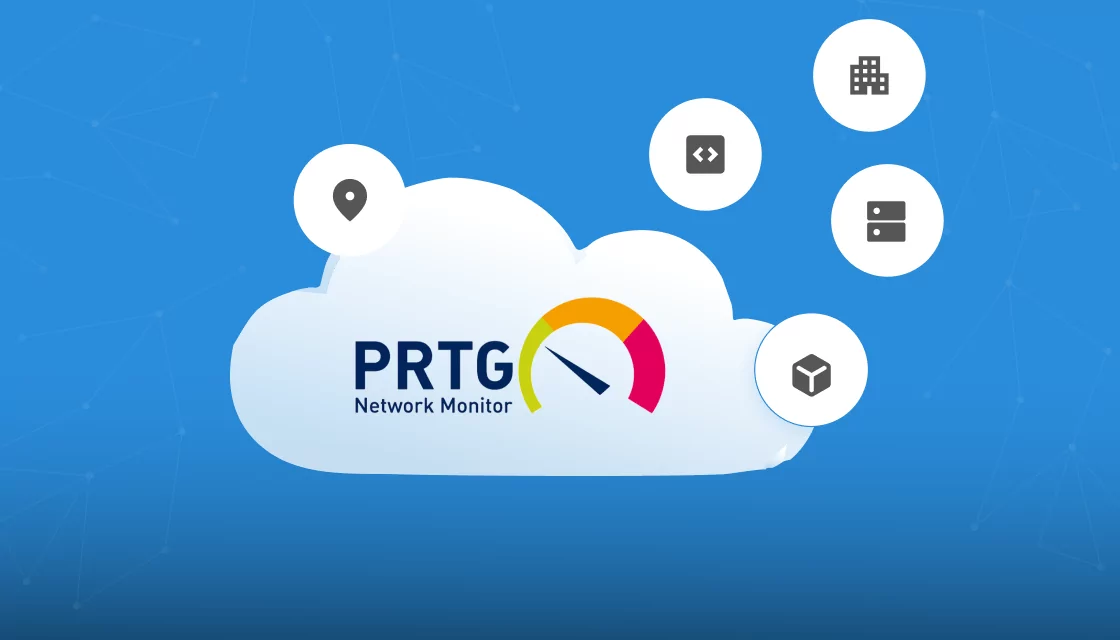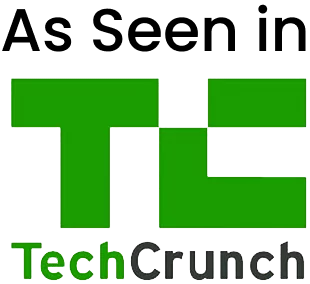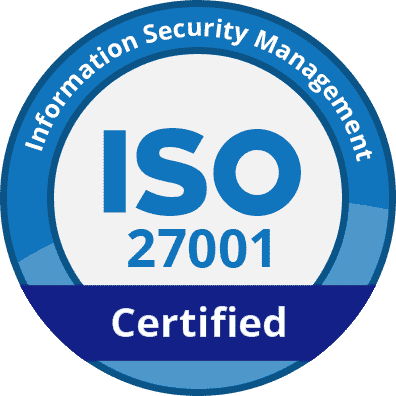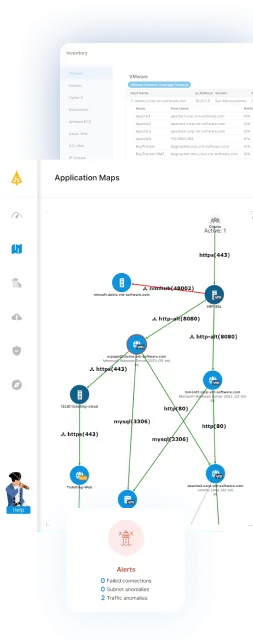What Is PRTG Network Monitor?
PRTG Network Monitor is a network monitoring tool that provides visibility across an entire IT infrastructure. Developed by Paessler AG, it supports monitoring of network performance, bandwidth, and hardware health, making it a versatile tool for IT administrators.
Users can configure a range of sensors to track KPIs and receive alerts on network anomalies, ensuring proactive management of resources. PRTG is known for its easy setup and intuitive interface, allowing users to quickly deploy and begin monitoring activities.
The solution supports various protocols, including SNMP, WMI, and NetFlow, providing compatibility with a wide range of devices. Its flexibility and reporting capabilities make it a popular choice for enterprises looking for an all-in-one monitoring solution.
Table of Contents
ToggleKey Features of PRTG Network Monitor
Here are some of the key features that make PRTG a useful tool for maintaining efficient and reliable network operations:
- Customizable dashboards and alerts: PRTG offers fully customizable dashboards that allow users to visualize network data in real-time through graphs, maps, and tables. The alerting system is flexible, enabling notifications via email, SMS, or push notifications. Users can set thresholds for various metrics, ensuring they receive alerts on specific network conditions or potential issues before they escalate.
- Multi-protocol support: PRTG supports various protocols like SNMP, WMI, NetFlow, and HTTP, allowing it to monitor a range of devices across diverse network environments. This multi-protocol support enables compatibility with routers, switches, servers, and cloud-based resources, ensuring comprehensive coverage of the IT infrastructure.
- Advanced reporting and historical data analysis: PRTG includes reporting features that allow users to generate detailed, customizable reports on network performance. These reports can cover any timeframe, from real-time data to historical trends, which helps in diagnosing issues, planning for capacity needs, and justifying IT investments with data-backed insights.
- Scalability with cluster support: The tool supports clustering, which allows for high availability and load distribution across multiple servers. This scalability is essential for large enterprises, as it ensures consistent monitoring even during peak times or server failures.
Why Consider Alternatives to PRTG Network Monitor?
PRTG Network Monitor is a powerful tool for tracking network health and performance, but it has limitations that may impact certain organizations:
- High cost: Licensing and ongoing support costs for PRTG can be high, particularly for organizations with limited budgets, making it challenging to justify for smaller IT teams.
- Customization time requirements: To tailor PRTG to more unique needs, significant time and effort are often required for setup and customization, potentially consuming extensive man hours.
- Limited multi-device and ip management: PRTG struggles with managing devices with multiple IPs or those that change locations frequently, which can hinder accurate device tracking and data consistency.
- Slower alerting response time: Users report delays in PRTG’s alerting response, which can affect the tool’s effectiveness for real-time monitoring and quick troubleshooting.
- Complex and limited dashboard options: While customizable, the dashboard interface can feel cluttered and less intuitive, potentially making data visualization and analysis more challenging for some users.
- Restrictive historical data options: The default historical data intervals are limited, with options for live, 2-day, or 30-day views, which may not meet every organization’s reporting needs.
- Performance issues with the web interface: Some users experience slow load times in the web interface, especially when moving quickly between different monitors or metrics.
- Limited auto-upgrade for agents: The desktop agent doesn’t automatically upgrade alongside server updates, requiring manual intervention to ensure consistency across the system.
- False alerts with high bandwidth usage: Under certain conditions, like high bandwidth over MPLS networks, PRTG may issue false alerts indicating that equipment is down when it is not, affecting monitoring reliability.
Notable Alternatives to PRTG Network Monitor
1. Faddom
Faddom is a lightweight application dependency mapping tool. It allows you to map all your servers into the business app they support in less than 60 minutes. It is agentless, it doesn’t require any credentials, and it’s very affordable, starting at $10K/year.
Key features:
- Hybrid Mapping: Supports all IT resources, on-premises and in the cloud, including KVM, AWS, Azure, Google Cloud, and Oracle Cloud.
- Real-time mapping: Faddom maps the entire environment in real-time, updating 24/7
- Easy deployment: Automated lightweight deployment, takes less than 60 minutes
2. Zabbix
Zabbix is an open-source network monitoring solution known for its flexibility and extensive feature set, enabling organizations to monitor a vast range of infrastructure components. It collects and analyzes data to provide insights into system health, performance, and security.
License: AGPL-3.0
Repo: https://github.com/zabbix/zabbix
GitHub stars: 4K+
Contributors: 30+
Key features of Zabbix:
- Metric collection: Collects data from a variety of sources, including network devices, cloud services, IoT sensors, and applications.
- Problem detection: Offers intelligent thresholds, trend prediction, and machine learning capabilities for automated problem detection.
- Flexible alerting and escalation: Provides multi-channel alerting through email, SMS, and popular communication platforms like Slack and MS Teams. Supports custom escalation scenarios and integrates with external messaging systems.
- Data visualization: Features customizable dashboards with various widgets, allowing users to visualize data through graphs, geo-maps, and infrastructure maps.
- Business service monitoring: Includes tools for business-level monitoring and root cause analysis, enabling IT teams to track SLAs and understand the business impact of IT issues.
Source: Zabbix
3. Nagios XI
Nagios XI is an enterprise-grade IT infrastructure monitoring solution for scalability and efficiency. It provides real-time monitoring for critical infrastructure, ensuring high performance and reliability across networks, servers, and applications.
License: Commercial
Key features of Nagios XI:
- Monitoring engine: Powered by the Nagios Core 4 engine, enabling efficient, high-performance monitoring for large-scale infrastructures.
- Alerting and capacity planning: Includes automated trending and capacity planning graphs, allowing IT teams to anticipate infrastructure needs and avoid downtime. Supports multi-channel alerts via email, SMS, Slack, and Microsoft Teams.
- Customizable interface and extensibility: Offers a customizable GUI, allowing individual users to tailor their monitoring views. Its extensible architecture supports both in-house and third-party add-ons.
- Multi-tenant support and advanced user management: Offers advanced user management features, enabling administrators to control user access and visibility across infrastructure components.
- Configuration wizards for simplified setup: Offers wizards to simplify the setup process, allowing users to configure monitoring without extensive technical knowledge.
Source: Nagios
4. ManageEngine OpManager
ManageEngine OpManager is a network monitoring tool offering deep visibility into the performance of various network and IT infrastructure components. It provides real-time monitoring across routers, switches, servers, VMs, firewalls, and storage devices, making it suitable for both small and large IT environments.
License: Commercial
Key features of ManageEngine OpManager:
- In-depth network monitoring: Offers real-time monitoring and visibility into the health and performance of IP-based devices, helping IT teams track availability and quickly identify network issues.
- Physical and virtual server monitoring: Supports monitoring major platforms like Hyper-V, VMware, Citrix, and Nutanix HCI.
- Wireless network monitoring: Offers detailed wireless stats for access points and other wireless devices, allowing teams to monitor WiFi strength, traffic, and availability.
- WAN and Cisco ACI monitoring: Utilizing Cisco IPSLA technology, monitors WAN link performance and provides visibility into the Cisco ACI infrastructure, including tenants and endpoint groups, to support high-performance network operations.
- Storage monitoring: Includes capacity utilization monitors and growth trend graphs for storage devices, supporting effective management of Fiber Channel switches, storage arrays, and tape libraries.
Source: ManageEngine
5. SolarWinds Network Performance Monitor
SolarWinds Network Performance Monitor (NPM) is a network monitoring solution to optimize performance and maintain uptime across complex IT environments, including on-premises and hybrid cloud infrastructures. Leveraging SolarWinds’ observability platform, NPM provides continuous network monitoring to detect and resolve issues.
License: Commercial
Key features of SolarWinds Network Performance Monitor:
- Network monitoring: Continually monitors network availability and performance, providing real-time data that enables IT teams to address potential issues proactively.
- NetPath™ visualization: Provides end-to-end visualization of critical network paths, helping IT teams trace data flows and quickly pinpoint and resolve network bottlenecks.
- Automated hybrid network mapping: Includes mapping capabilities that automatically create visual maps of on-premises and hybrid networks.
- In-depth performance analysis with PerfStack™: Enables deep dives into network performance metrics, allowing teams to analyze and correlate data across various network components for fine-tuned performance optimization.
- Alerting with AIOps: Offers a fast alerting system, including anomaly-based alerts powered by AIOps, to notify IT teams of unusual network activity.
Source: SolarWinds
Learn more in our detailed guide to PTRG network monitor vs SolarWinds
6. LogicMonitor
LogicMonitor is a cloud-based network monitoring platform that provides visibility into network performance and health across complex IT environments. With capabilities like auto-discovery, topology mapping, and anomaly detection, it offers end-to-end monitoring and fast troubleshooting for network and IT devices.
License: Commercial
Key features of LogicMonitor:
- Auto-discovery and integration support: Supports over 2,000 integrations with major vendors, including Cisco, Juniper, and Meraki.
- Dynamic topology mapping: The platform’s auto-generated topology maps visualize relationships between network components, helping teams understand dependencies and gain real-time context on traffic flow.
- Protocol monitoring: Provides monitoring through SNMP, API, NetFlow, sFlow, and WMI, ensuring visibility across all network types, including SD-WAN, cloud-based networks, routers, firewalls, and wireless devices.
- Unified logs and metrics for fast troubleshooting: Simplifies troubleshooting by integrating real-time network logs with performance metrics.
- Alerting with anomaly detection: Eses threshold-based and log-based anomaly detection to notify teams of potential issues, enabling proactive network management.
Source: LogicMonitor
7. Site24x7
Site24x7 is a cloud-based network monitoring tool for real-time tracking and fault management of network components across enterprise infrastructures. It provides insights into device health, performance, and traffic metrics for both on-premises and remote networks.
License: Commercial
Key features of Site24x7:
- In-depth network traffic monitoring: SEnables monitoring of inbound and outbound traffic, packet data, errors, and discards, allowing IT teams to analyze network performance and optimize bandwidth usage based on actionable insights.
- Multi-vendor support: Supports over 450 vendors, including Cisco, Juniper, and Dell, and 11,000 device types.
- Auto-discovery and mapping: Automatically discovers all network devices within a specified IP range and provides Layer 2 and topology maps.
- Dashboard and SNMP trap processing: Its health dashboard tracks top-performing devices based on response time and packet loss, while SNMP trap processing provides custom alerts for fault detection directly from SNMP-configured network devices.
- VoIP and VPN monitoring: Monitors VoIP quality metrics such as jitter and latency, ensuring optimal call quality.
Source: Site24x7
8. Progress WhatsUp Gold
Progress WhatsUp Gold is a network monitoring solution that provides visibility into device performance, bandwidth usage, and network availability across on-premises and cloud environments. With a focus on operational efficiency and uptime, it enables IT teams to detect, troubleshoot, and resolve network issues before they impact end users.
License: Commercial
Key features of Progress WhatsUp Gold:
- Automated device discovery and network mapping: Automatically detects all network devices and visualizes their connections, generating interactive topology maps to simplify network management.
- Real-time alerts and customizable notifications: The Alert Center consolidates alerts from active and performance monitors in a single dashboard, enabling custom notifications based on state changes or threshold breaches.
- Dashboards and NOC viewer: Preconfigured and customizable dashboards provide a unified view of network health, performance, and uptime. The Network Operations Center (NOC) Viewer enables automatic cycling through multiple data screens.
- IP monitoring: Monitors any IP-accessible device using protocols like Ping, SNMP, WMI, and SSH.
- Wireless and virtual infrastructure monitoring: Visualizes dependencies between wired and wireless networks with dynamic maps and historical reports, covering clients, access points, and wireless LAN controllers.
Source: WhatsUp Gold
9. Datadog
Datadog provides network performance monitoring that offers end-to-end visibility across on-premises, cloud, and hybrid environments. By tracking connections between hosts, services, VPCs, and other network elements, Datadog helps organizations quickly isolate network issues and optimize performance.
License: Apache-2.0
Repo: https://github.com/DataDog/datadog-agent
GitHub stars: 2K+
Contributors: 500+
Key features of Datadog:
- End-to-end network visibility: Monitors traffic between applications, containers, availability zones, and datacenters, allowing IT teams to visualize network flows and detect bottlenecks or connectivity issues across network environments.
- Real-time network insights: Offers real-time tracking of critical network metrics, including TCP retransmits, latency, and connection churn.
- Granular application-layer monitoring: Enables detailed monitoring at various layers, from the app and IP address to specific ports and process IDs (PIDs).
- DNS performance analysis: Offers system-wide DNS monitoring, providing insights into request volume, response times, and error rates.
- Service and cloud region mapping: Visualizes communication between services, cloud regions, and resources, helping teams manage cloud networking costs by identifying high-traffic services and isolating traffic spikes.
Source: Datadog
10. ScienceLogic
ScienceLogic is an AI-powered IT operations platform to provide unified visibility, automation, and intelligence across complex hybrid infrastructures. Its modular design enables organizations to monitor, manage, and optimize IT resources spanning on-premises, cloud, and multi-cloud environments.
License: Commercial
Key features of ScienceLogic:
- Hybrid cloud monitoring and data contextualization: Provides end-to-end visibility across distributed IT architectures, consolidating data from multi-cloud and on-prem environments.
- Automated configuration and compliance management: Enables centralized configuration backups and automated network compliance auditing, simplifying multi-vendor infrastructure management.
- AI-powered root cause analysis: Its AI feature, Skylar, performs automated root cause analysis, diagnosing issues up to 10 times faster than manual processes.
- IT workflow automation: Offers IT automation to simplify operations, enabling integration with CMDB and ITSM solutions.
- Business service management: Provides views of IT services and their impact on business operations.
Source: ScienceLogic
Conclusion
Choosing the right network monitoring tool depends on your organization’s specific needs. While PRTG Network Monitor offers comprehensive infrastructure management capabilities, it may not suit every environment due to cost, complexity, and scalability. Alternatives can provide faster, more cost-effective deployment with real-time visibility across both on-premises and cloud environments. These options often feature intuitive dashboards, flexible alerts, and scalability, ensuring optimal performance with minimal complexity. Whether you’re focused on overall network health or detailed application insights, there are solutions that deliver better results without the limitations of traditional tools.









